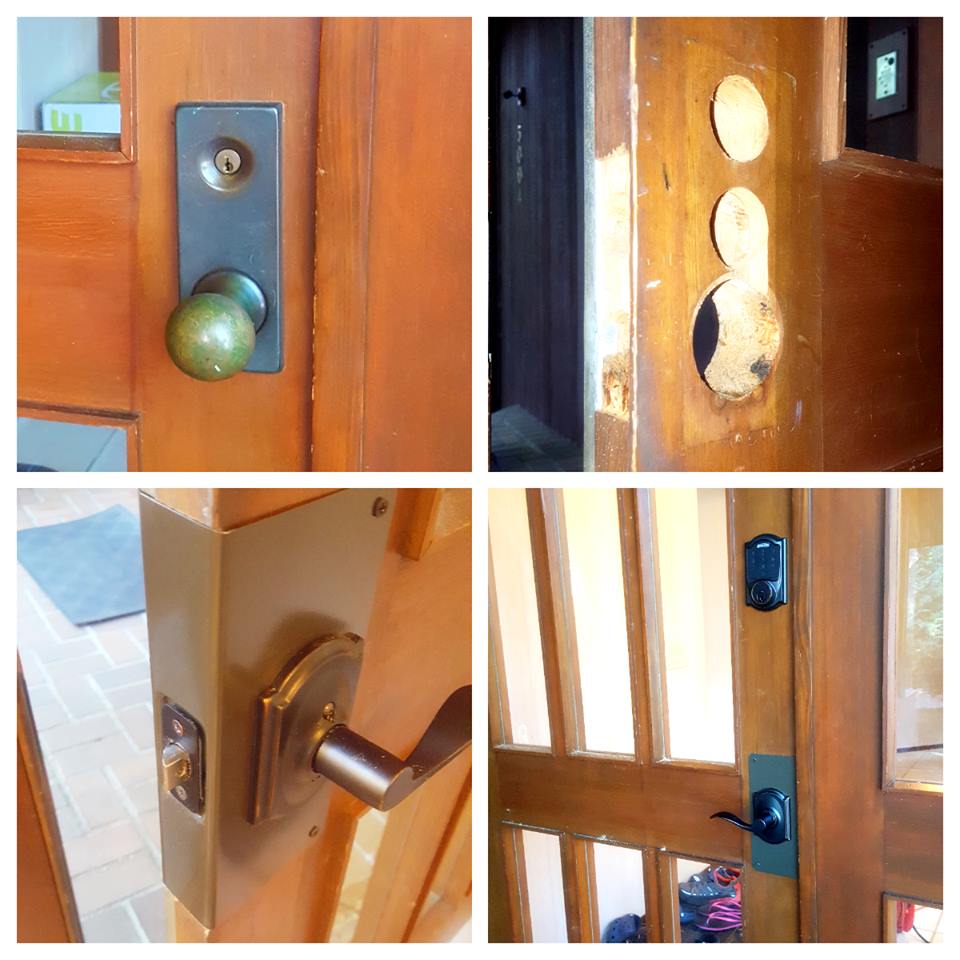If you’ve ever done any research on what kind of deadbolt to buy, you’ve probably read that whatever you choose, it’s important to have a strike plate that’s affixed to the jamb with long screws that sink into the frame of the house. This is to stop the door from being easily kicked in. When Consumer Reports tested the strike plates of a number of different brands, they found that Schlage’s fared pretty well against repeated attacks. I like these strikes because they’re beefy and yet they’re completely concealed by the decorative plate that also comes with the Schlage deadbolts. Generally, I think they’re sufficient.
When customers are particularly concerned about door kick-ins, I like to install the 11” plates sold under various brand names like Entry Armor, Defiant, and Gatehouse. You can get them at the big box stores for around $10. They have six long screws that go deep into the studs and they’re reasonably attractive, coming in a few different finishes. They’re also good for covering up mistakes from prior installations.
I’m aware of some products out there that run the whole length of the door frame. They have names like StrikeMaster II Pro and Door Security Pro XL. They’re not particularly pretty and I suspect they’re primarily purchased by people who hope to be able to buy time to flush large quantities of drugs down the toilet when the police are at their door with a battering ram. I think they’re overkill, especially if you don’t have bars on your windows. What’s the point of having an impenetrable door if six feet away there’s a very easy point of entry?
If you’ve never done it before, go around your house and look at the strike plates on your door frames. If some lazy contractor only installed them with ¾” screws, you might want to spend a bit of time this weekend making them a little more secure.

 Commercial
Commercial 



